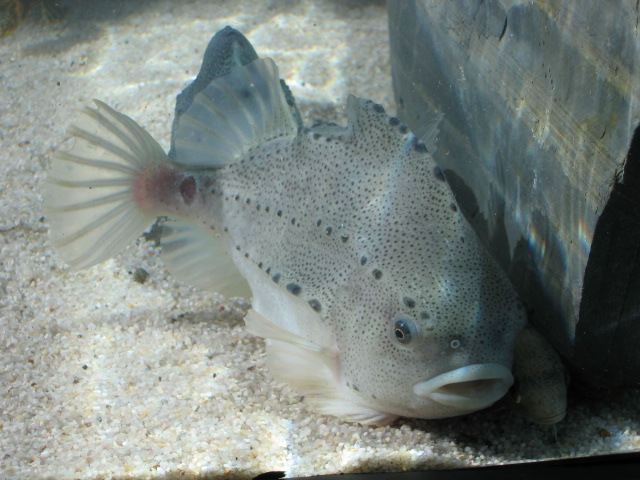Lumpfish

Scientific Name: Cyclopterus lumpus
Order: Perciformes
Family: Cyclopteridae
Description: The Lumpfish has a stout body with scaleless skin. Along the top and sides of the fish are bumpy ridges and fleshy knobs called tubercles. The pelvic fins are modified into a sucker allowing the fish to stick to rocks and other hard surfaces.
Distribution: Occurring on both sides of the Atlantic Ocean , this bottom dwelling fish lives in cold to temperate waters, on stony, rocky bottoms.
Diet: Consumes a wide variety of invertebrates including shrimp, amphipods, copepods and small fish like herring and sand lance.
Growth: Lumpfish grow very quickly in their firs year of life, attaining lengths of 4.5-5.3cm long. They become mature in their third year at around 11cm long. Maximum size is around 46-60cm long and a weight of 9.5kg.
Reproduction: Spawning takes place along the coast in shallow water starting in early spring. The female will lay eggs in large sticky spongy masses which may consist of 140,000 eggs or more. The female then moves to deeper waters leaving the male to protect the nest till the eggs hatch. During this time the male will not eat or leave the nest, except when chasing off a predator.
Predation: Predators of Lumpfish include seals, Sperm whales and Greenland Sharks.
Relation to man: The Lumpfish is fished for its roe to make caviar. It is also eaten in some European countries.
Images
 |
 |
 |
OSC Research
Gamperl Lab - Physiological limits of various coastal marine species - This research is investigating the metabolism and immunology in numerous marine fish species (from mackerel to lumpfish), and examining how various factors influence the swimming and cardiorespiratory physiology of cold-ocean fishes.